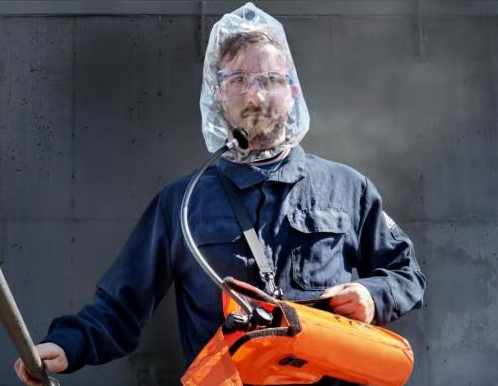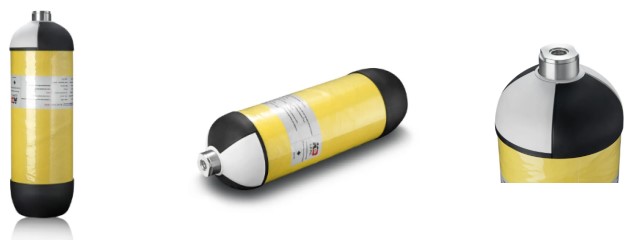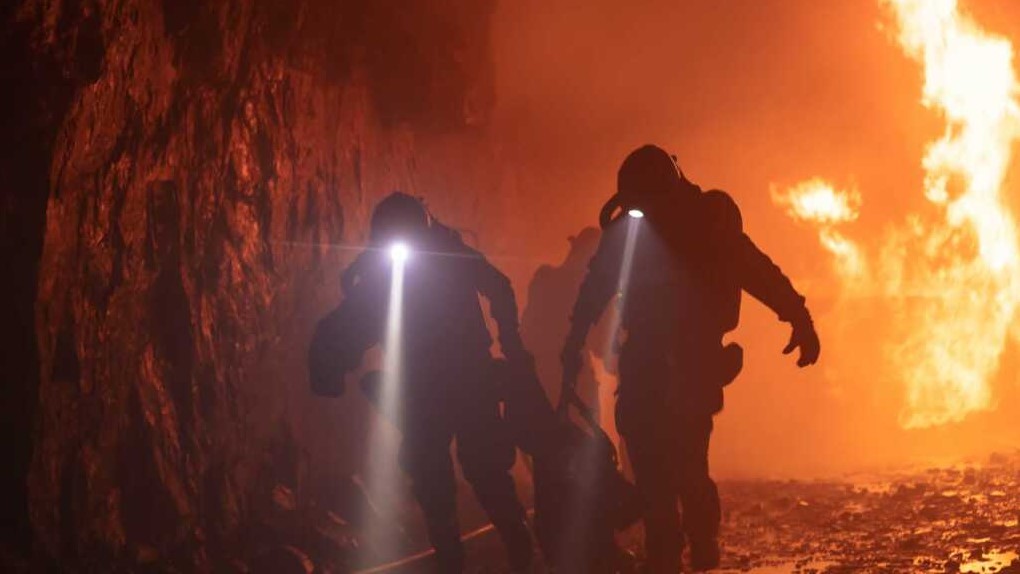Working in a mine is a hazardous occupation, and emergencies such as gas leaks, fires, or explosions can quickly turn an already challenging environment into a life-threatening situation. In these scenarios, having access to reliable emergency rescue breathing apparatus (ERBA) is vital. These devices allow miners to escape dangerous situations where toxic gases, smoke, or a lack of oxygen threaten their lives. One of the key components of modern breathing apparatus is the use of carbon fiber composite cylinders, which provide the necessary air supply while remaining lightweight, durable, and easy to handle.
Importance of Emergency Breathing Apparatus in Mines
Mining is an industry where safety is paramount, and equipment designed to safeguard workers must be robust and dependable. An emergency rescue breathing apparatus (ERBA) is a device used to provide breathable air in case of hazardous situations underground. Mines often face the risk of gas leaks (such as methane or carbon monoxide), sudden fires, or collapses that can trap workers in areas where the air becomes toxic or oxygen levels drop dangerously low.
The primary goal of an ERBA is to allow miners to breathe clean air long enough to escape to a safe location or until they are rescued. This equipment is crucial because, in the event of a toxic atmosphere, even a few minutes without clean air can be fatal.
Function of an Emergency Rescue Breathing Apparatus
An ERBA is designed to be used in emergencies where there is little or no breathable air. It is different from the standard breathing apparatus used for firefighting or industrial applications, which may be worn for longer durations during rescue operations. The ERBA is specifically tailored to provide short-term protection during escape.
Key Components of ERBA:
- Breathing Cylinder: The core of any ERBA is the breathing cylinder, which contains compressed air. In modern devices, these cylinders are often made from carbon fiber composite materials, which offer significant advantages over older steel or aluminum cylinders.
- Pressure Regulator: This component controls the flow of air from the cylinder, ensuring a steady supply to the user. It regulates the air to a level that is safe and comfortable for the user to breathe while escaping.
- Face Mask or Hood: This covers the user’s face, providing a seal that prevents the inhalation of toxic gases. It directs the air from the cylinder into the user’s lungs, ensuring they have clean air even in a contaminated environment.
- Harness or Carrying Straps: This secures the device to the user, ensuring that it remains firmly in place during escape efforts.
Role of Carbon Fiber Composite Cylinders in ERBA
The adoption of carbon fiber composite cylinders in emergency rescue breathing apparatuses has brought significant benefits to miners and other users who rely on these devices. Carbon fiber is a material known for its strength and lightweight properties, which makes it particularly well-suited for use in ERBA systems.
Advantages of Carbon Fiber Cylinders:
- Lightweight Construction: Traditional cylinders made from steel or aluminum can be heavy and cumbersome, which can make it harder for users to move quickly during an emergency. Carbon fiber composite cylinders are much lighter, reducing the overall weight of the breathing apparatus and allowing for easier mobility. This is particularly important for miners who need to navigate narrow tunnels or climb to safety.
- High Strength and Durability: Despite being lightweight, carbon fiber is incredibly strong. It can withstand high pressures, which is necessary for containing compressed air. These cylinders are also resistant to corrosion, which is an important factor in the humid and often chemically aggressive environments found in mines.
- Longer Air Supply: The design of carbon fiber cylinders allows them to store more air in a smaller space. This means that miners using ERBA equipped with carbon fiber cylinders can have more time to escape—an invaluable asset in emergency situations where every minute counts.
- Improved Safety: The durability of carbon fiber composite cylinders makes them less likely to fail during an emergency. Traditional steel cylinders are more prone to corrosion, dents, or damage that could lead to air leaks. Carbon fiber, on the other hand, is more resilient, which improves the overall safety of the device.
Maintenance and Lifespan of Carbon Fiber ERBA
To ensure that an ERBA functions properly when needed, regular maintenance and inspections are essential. Carbon fiber composite cylinders must be tested to ensure they can still contain the necessary pressure and provide air effectively. Here are some key maintenance tasks that should be performed:
- Regular Inspections: The breathing apparatus, including the carbon fiber cylinder, should be inspected frequently to check for signs of wear and tear. Any damage to the cylinder, such as cracks or delamination, could compromise its ability to store air safely.
- Hydrostatic Testing: Like other pressure vessels, carbon fiber cylinders must undergo periodic hydrostatic testing. This involves filling the cylinder with water and pressurizing it to a level higher than its operational pressure to check for leaks or weaknesses. This ensures the cylinder can safely store compressed air during an emergency.
- Proper Storage: ERBA devices, including their carbon fiber cylinders, should be stored in a clean and dry location. Exposure to extreme temperatures, moisture, or chemicals could degrade the integrity of the cylinder, reducing its lifespan and effectiveness.
ERBA Use Cases in Mines
Mines are unique environments with their own specific hazards, which makes the use of ERBA essential in several scenarios:
- Gas Leaks: Mines can experience leaks of hazardous gases like methane or carbon monoxide, which can quickly make the air unbreathable. ERBA provides miners with the clean air they need to escape to safety.
- Fires and Explosions: Fires or explosions in a mine can release smoke and other toxic substances into the air. ERBA enables workers to move through smoke-filled areas without inhaling dangerous fumes.
- Cave-Ins or Collapses: When a mine collapses, miners may be trapped in confined spaces where the air supply is limited. In these situations, an ERBA can provide critical breathing support while awaiting rescue.
- Sudden Oxygen Deficiency: Mines can have areas with low oxygen levels, especially at deeper levels. An ERBA helps protect workers from the dangers of suffocation in these oxygen-deprived environments.
Conclusion
Emergency rescue breathing apparatuses (ERBAs) are essential safety tools for miners working in hazardous environments. Their primary function is to provide a short-term supply of breathable air, allowing workers to escape life-threatening situations involving toxic gases, fires, or oxygen deficiency. The introduction of carbon fiber composite cylinders has revolutionized the design of ERBAs by making them lighter, stronger, and more reliable. These cylinders enable miners to carry the equipment more easily and to have more breathable air available in the event of an emergency. Proper maintenance and regular testing ensure that ERBAs remain functional and ready to perform when needed, making them indispensable for ensuring the safety of miners worldwide.
Post time: Aug-28-2024



